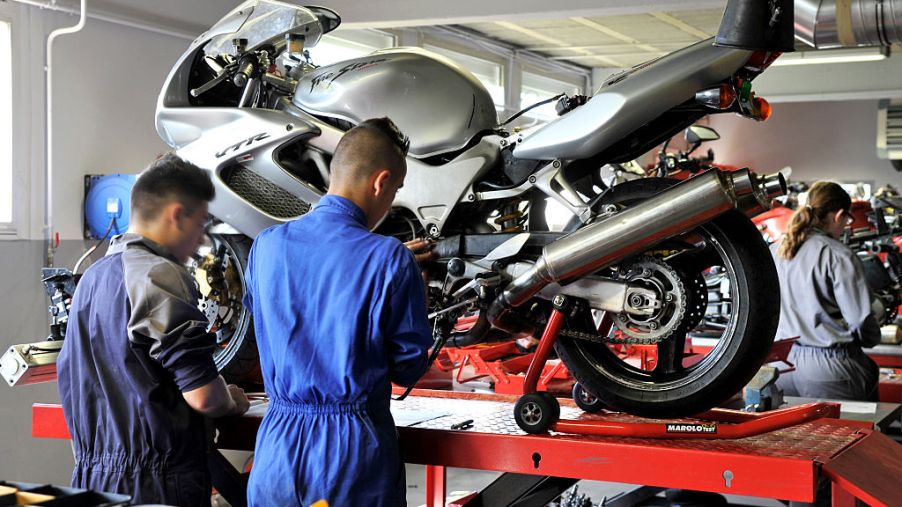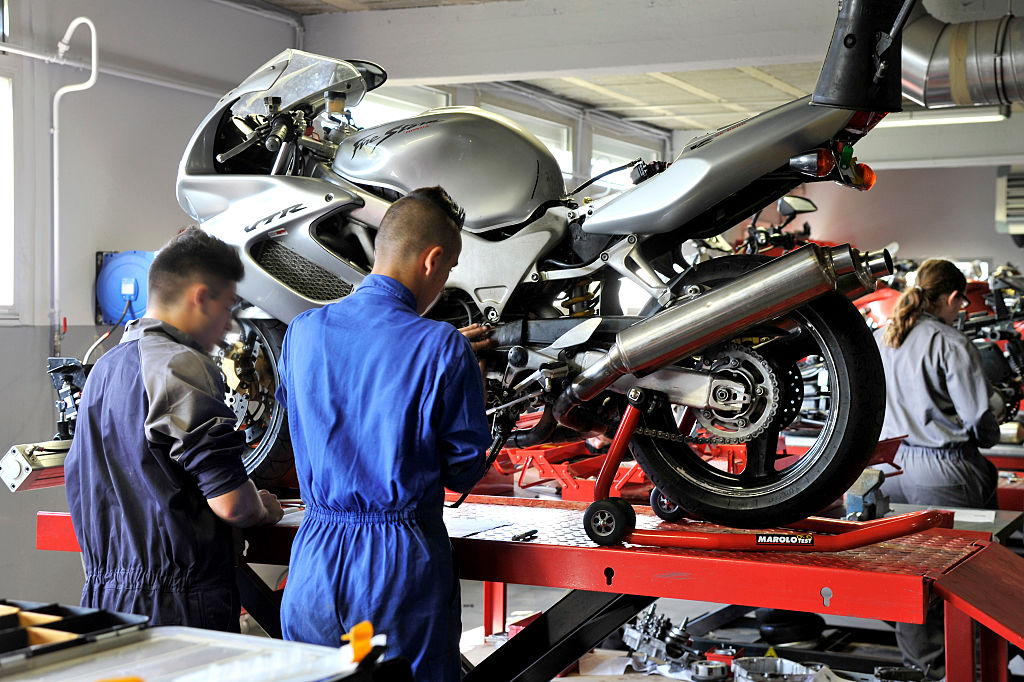
What’s Different About Car and Motorcycle Maintenance?
Regardless of what motor vehicle you own, whether car or diesel truck, many maintenance tasks will be similar. Oil changes, air filter replacement, checking the brakes, inspecting the tires, and so on. And many of these tasks also apply to motorcycle maintenance. However, if you are considering moving on from DIY car maintenance to motorcycle maintenance, there are a few differences between the two.
Some car maintenance items don’t translate exactly to motorcycles
It’s important to note that some motorcycle maintenance tasks simply aren’t an issue for cars. For example, there are no cars on sale today with a chain drive. On the other hand, chain-driven motorcycles are some of the most common bikes. And, just as with bicycles, it’s important to monitor the chain tension and lubricate it regularly.
That being said, shaft-driven motorcycle maintenance is roughly analogous to a car’s transmission or differential service. Namely, as Motorcyclist explains, shaft-drive bikes like those from BMW and Moto Guzzi need regular shaft drive oil changes. The exact frequency depends on the bike, and the oil itself is not regular motor oil, rather hypoid gear oil.
Speaking of motor oil, that’s another area where motorcycle and car maintenance differ. Motorcycle engines usually rev significantly higher than car engines, and as a result, they often naturally consume oil more frequently, Motorcycle News reports. So, while the service interval may not be different, you may have to top up the motorcycle’s oil more frequently.
In addition, as Jalopnik explains, if your motorcycle has a wet clutch, it uses engine oil as transmission fluid. That’s why, as HowToFixYourDirtBike explains, motorcycle and car oil aren’t interchangeable. Car motor oil has anti-friction additives that would interfere with a motorcycle’s clutch. Motorcycle oil still has anti-wear additives, but they’re not quite the same thing. However, even if your bike has a dry clutch like many Ducatis do, don’t use car oil.
Also, a motorcycle’s high-revving nature also affects another maintenance area.
Motorcycle maintenance involves valve adjustment
Both car and motorcycle engines rely on valves to function. The intake and exhaust valves open and close to let fresh air in and combustion fumes out. To do that, as Cars.com explains, they have to be within a set distance of the lobes or rocker arms that actuate them. This is the process of valve clearance adjustment. But motorcycle valve maintenance has to be performed more regularly than car valve maintenance.
Most modern cars switched to hydraulic lifters (tappets) to help operate their valves. These use pressurized fluid to modulate the clearance, which basically makes them self-adjusting. In other words, they’re basically maintenance-free. However, as Revzilla explains, only a few motorcycles use these. That’s because, in addition to adding weight and cost, they can’t handle high redlines. For a Harley cruiser, that’s fine, but that wouldn’t work on a sportbike.
As a result, most motorcycles rely on purely mechanical ways of controlling valve clearance. One such system is the screw-and-locknut setup. As Road & Track explains, this requires tightening or loosening a special lock nut to adjust the valve clearance.
Others, though, use a shim-and-bucket design. This uses metal shims of a given thickness over a ‘bucket’ that sits on top of the valve stem. As you ride, the metal shim eventually wears down and has to be replaced.
The valve adjustment service interval varies from bike to bike, ADV Rider forum users report. But there are signs of a motorcycle engine in need of a valve adjustment. If the valve clearances are too loose, the engine will clatter loudly. If they’re too tight, the engine will start to overheat.
Motorcycle suspension maintenance
There’s another motorcycle maintenance item that differs from car maintenance tasks. That’s involving the motorcycle’s suspension. Specifically, in the front.
In the back, motorcycles come with conventional shock absorbers and springs. As is the case in cars, these components eventually wear out and need to be replaced. Most of the signs of worn rear bike suspension are similar to that in a car, Cars.com and BMW Motorcycle Owners Club forum users report. These including excessive bobbing, poorer handling, and weaving at high speeds. It can also manifest as excessive tire wear.
But a modern motorcycle’s front suspension isn’t quite the same as a car’s suspension. Motorcycles use forks up front, and their springs are inside. In addition, unless the spring has noticeable damage, it doesn’t need to be replaced as often. Instead, as Motorcyclist and Jalopnik explain, what really needs to be replaced is the fork seals and fork oil. Over time, the oil gets dirty, loses viscosity, and stops dampening bumps and holding the road as effectively. It should be changed roughly every 10,000 miles.
The additional tool you’ll need

Luckily, many of the tools needed for most of these motorcycle maintenance tasks are the same as the ones for car maintenance. Barring the specialized tools for fork oil changes, you can use the same wrenches, screwdrivers, and sockets as you use for cars. But there is one more item you’ll need: a motorcycle stand or lift.
A motorcycle stand, The Drive explains, helps keep the bike balanced in place, whether for storage or maintenance. Getting the bike off the ground also helps with fluid changes. Depending on how heavy your bike is, or where its strongest structural component is, you may need to get a motorcycle lift instead.
Follow more updates from MotorBiscuit on our Facebook page.


